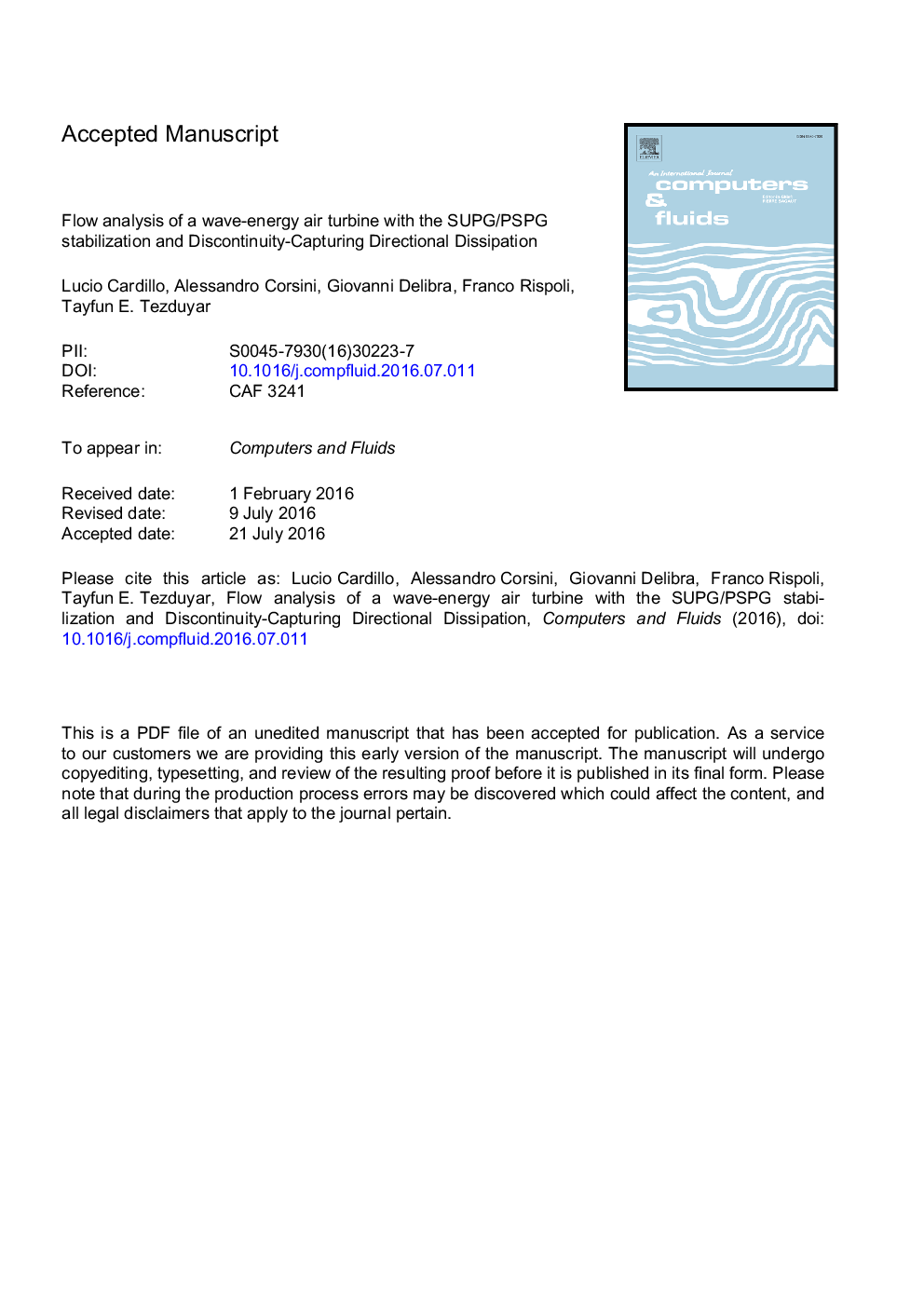| Article ID | Journal | Published Year | Pages | File Type |
|---|---|---|---|---|
| 5011970 | Computers & Fluids | 2016 | 26 Pages |
Abstract
We present a flow analysis of a wave-energy air turbine, commonly known as Wells turbine. The focus here is on the computational method used in the analysis, based on the Streamline-Upwind/Petrov-Galerkin (SUPG) and Pressure-Stabilizing/Petrov-Galerkin (PSPG) stabilizations and the Discontinuity-Capturing Directional Dissipation (DCDD). The SUPG/PSPG stabilization is used rather widely and successfully. The DCDD, first introduced to complement the SUPG/PSPG method in computations of incompressible flows in the presence of sharp solution gradients, was also shown to perform well in standard turbulent-flow test computations when compared to the Smagorinsky Large Eddy Simulation (LES) model. The results obtained in our computational analysis of the Wells turbine here compare favorably to the available experimental data, and this demonstrates that the DCDD method performs well also in turbomachinery flows.
Related Topics
Physical Sciences and Engineering
Engineering
Computational Mechanics
Authors
Lucio Cardillo, Alessandro Corsini, Giovanni Delibra, Franco Rispoli, Tayfun E. Tezduyar,
